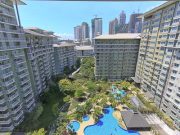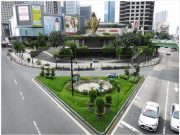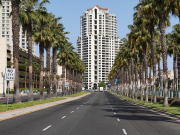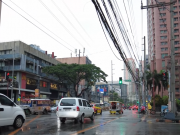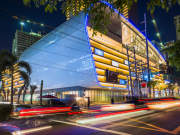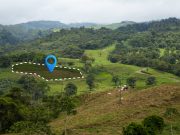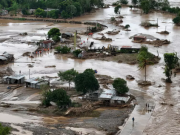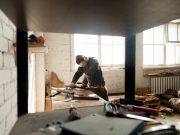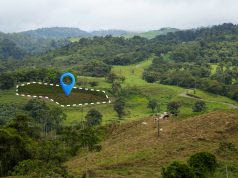
Executive Summary
By Sheila Viesca, Ph.D.
With insights from John Riad, CEO of HousingInteractive
The Work-from-Anywhere (WFA) revolution is permanently reshaping the Philippine real estate landscape. This isn’t a temporary fad; it’s a fundamental transformation driven by technology and a strong desire for a healthier work-life balance. This shift is significantly redistributing real estate demand across the country, creating compelling new opportunities for strategic real estate investments and a more balanced lifestyle for many Filipinos. Drawing on insights from HousingInteractive, the country’s leading digital brokerage, and TalkShop, a pioneer in workforce and leadership development, they are at the forefront of this evolution, guiding both buyers and investors through these dynamic changes and highlighting the new dynamics shaping residential behavior and market opportunities.
How Work-from-Anywhere is Decentralizing Demand
The Work-from-Anywhere (WFA) revolution is profoundly reshaping the Philippine real estate landscape. This isn’t a temporary blip; it’s a fundamental and permanent shift, driving real estate demand away from congested urban centers and into new, emerging hubs across the archipelago. This decentralization creates significant opportunities for investors, and hybrid work arrangements promise a more balanced lifestyle for countless Filipinos.

1. The Irreversible Shift to Remote Work
The acceptance of remote work is firmly established in the Philippines, not just a pandemic-era solution. Before 2020, over half of Filipino workers already embraced remote setups. This figure surged to an astounding 85% during the pandemic. Crucially, post-pandemic data reveal that nearly half (49%) of these workers intend to remain remote. This strong preference goes beyond mere convenience; it’s a deep-seated desire for a better work-life balance, freedom from soul-crushing traffic congestion, and the pursuit of a more fulfilling personal life.
The efficacy of remote teams is undeniable, as proven by the Philippine BPO industry. This sector experienced an impressive 40% boost in productivity while operating remotely. This statistic powerfully debunks the long-held assumption that a physical office is essential for high performance. For many, the necessity of a traditional workplace has simply evaporated.
2. Office Space: A Rapid Transformation
The shift to Work-from-Anywhere has an immediate and clear impact on office spaces, especially in prime areas like Bonifacio Global City in Metro Manila. Demand for large, traditional offices is dropping fast. Businesses are quickly moving to flexible co-working spaces or a hybrid work model, where employees divide their time between working from home and coming into an office.
This means we’re seeing a significant change in how office buildings are used. For example:
- Repurposing Old Office Buildings: Instead of sitting empty, older, less efficient office towers in the central business districts (CBDs) are being reinvented. Imagine a once-bustling office building in Makati now being converted into serviced apartments for short-term stays or even entirely mixed-use developments with residential units on upper floors and retail spaces below. This reduces their reliance on single corporate tenants who no longer need vast, dedicated floorplates, creating new income streams and revitalizing urban areas.
- The Co-working Boom: Providers of flexible workspace solutions are rapidly expanding their footprint across Metro Manila and even into provincial hubs like Cebu and Clark. They offer businesses short-term leases and adaptable environments where teams can reserve desks or private offices for a few days a week, rather than committing to expensive, long-term traditional leases. This provides flexible work arrangements that perfectly suit hybrid setup teams, minimizing overhead costs for businesses.
- Integrated Amenities in New Developments: New high-rise developments are no longer just selling living spaces; they’re selling a lifestyle that supports remote work. In emerging growth centers, you’ll find condos advertised with built-in “work-from-home ready units” – meaning they might have a dedicated nook or even a separate room designed as a home office, often equipped with enhanced internet infrastructure. Many new residential and mixed-use projects also include dedicated “business centers” or communal areas with high-speed internet, private meeting pods, and even soundproof booths for virtual meetings. This directly responds to the need for efficient and professional work environments that are conveniently located within or very near one’s living spaces.
The widespread adoption of flexible work arrangements is driving a major transformation in office spaces. Large corporate floors are being subdivided into smaller, versatile co-working areas and equipped with enhanced collaboration zones for occasional team meetings. Real estate developers are responding to this shift by incorporating smart homes with dedicated workspaces and advanced facilities for virtual meetings into new projects. The traditional concept of fully occupied, sprawling office buildings is giving way to agile, adaptable environments designed to support remote employees and hybrid work models.
3. The Shift from Location-Driven to Lifestyle-Driven Living
The pandemic didn’t just change where we work; it fundamentally reshaped how Filipinos choose to live. Pre-pandemic, your address was your job. Urban centers, including Makati, Ortigas, and Bonifacio Global City (BGC), dominated real estate demand because of their proximity to office spaces. Today, that model is collapsing. Filipino professionals are no longer tied to long commutes; they are now prioritizing a lifestyle-focused living choice.
What does this mean for the Philippine real estate landscape? People now demand:
- More Space for Work and Life: The days of tiny, city-center condos are fading. Filipinos want room for a proper home office or dedicated workspace, along with ample living space for their families.
- Access to Green Environments: Escaping the concrete jungle for green spaces, parks, and a closer connection to nature is a major draw for remote workers seeking a healthier work-life balance.
- Reliable Digital Connectivity: A strong, consistent internet connection is no longer a luxury; it’s the lifeline for working remotely. This is a non-negotiable for anyone considering moving outside the major urban centers.
- Cost-Effective Living: The exorbitant cost of living in Metro Manila makes provincial areas incredibly attractive. Lower rent, cheaper groceries, and reduced transportation costs free up income, allowing for a more balanced lifestyle.
HousingInteractive data clearly illustrates this seismic shift:
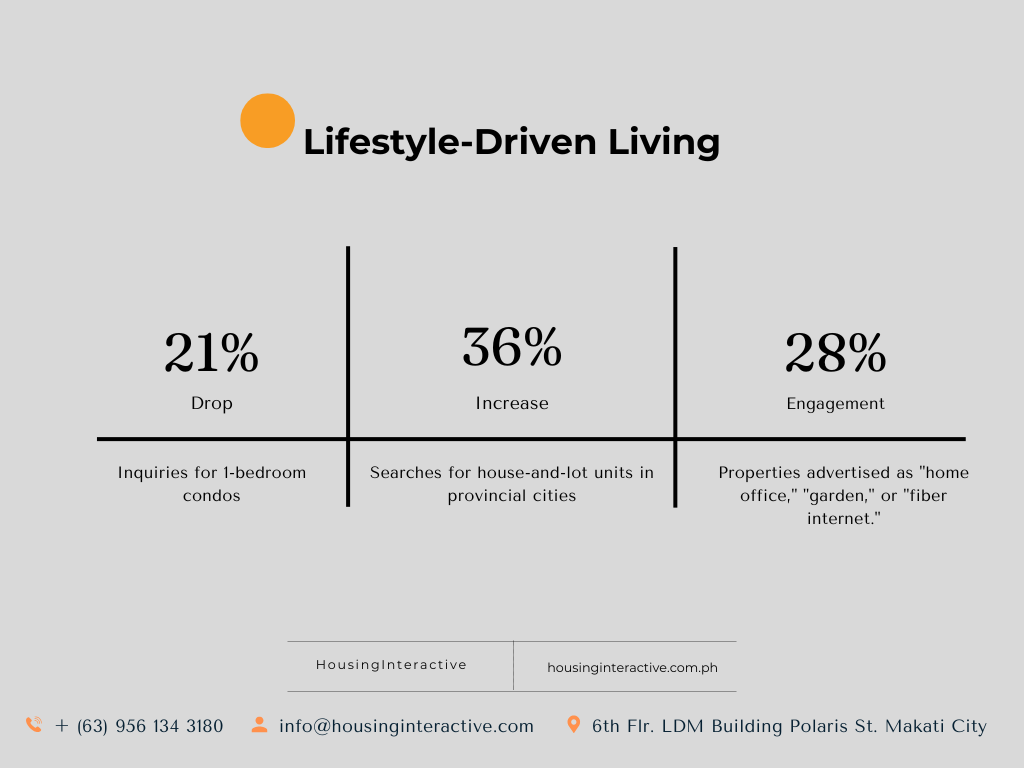
- Inquiries for 1-bedroom condos in central business districts (CBDs) have dropped by a significant 21% since 2021. This highlights the declining appeal of cramped city living without the daily office commute as a necessity.
- Conversely, searches for house-and-lot units in provincial cities are up by a striking 36%. This shows a strong move towards larger properties outside of Metro Manila.
- Properties specifically advertised with terms like “home office,” “garden,” or “fiber internet” receive an impressive 28% more engagement. This proves that buyers are actively searching for features that directly support their remote work and lifestyle preferences.
This data confirms that the driving force behind real estate demand has moved from mere proximity to the office to a holistic desire for improved well-being, greater space, and financial flexibility. It’s a clear signal for developers and investors on where the next wave of growth will emerge.
‘People no longer ask ‘how close is it to the office?‘
They ask, ‘Can I live well here while working remotely? ‘
— John Riad, CEO, HousingInteractive
4. The Rise of Hybrid Housing Models
Today’s home isn’t just a living space; it’s a dynamic hub for work, learning, and relaxation. Buyers are demanding much more flexibility in home design, driving the rise of hybrid housing models. These aren’t just trends; they’re essential features for the modern Filipino household.
What are buyers looking for?
- Dual-Use Rooms (Office/Guest Space): Homebuyers now need rooms that can seamlessly switch functions. A spare bedroom, for instance, must also serve as a fully functional home office or dedicated workspace during the week, then easily convert back to a guest room for visiting family members. This maximizes space efficiency in a hybrid setup lifestyle.
- High Ceilings and Better Ventilation: Beyond aesthetics, these features contribute significantly to employees’ mental health and overall well-being. Good airflow and natural light create a more comfortable and productive work environment, preventing the “boxed-in” feeling that can come with working remotely long-term.
- Outdoor Spaces (Patios, Balconies, Gardens): Access to the outdoors has become paramount. Patios, balconies, and private gardens offer crucial breaks from screen time, opportunities for fresh air, and additional areas for relaxation or even casual virtual meetings. They contribute to a healthy work-life balance and provide much-needed green spaces.
- Smart Home Features and Backup Power: Connectivity and reliability are key. Smart home technology, from automated lighting to integrated security, enhances convenience and productivity. More critically, reliable internet and backup power solutions (like solar panels or generators) are vital. They ensure uninterrupted work, even during power outages, which is a major concern for many remote workers in the Philippines.
Developers are rapidly adapting, offering WFA-ready units that combine essential functions with affordability. Some are even creating on-site co-working spaces within residential areas, giving residents professional work environments just steps from home. These innovations have transformed traditional houses into multi-functional spaces, offices, classrooms, wellness zones, and sanctuaries, reflecting a strong desire for a more balanced lifestyle and seamless remote work integration.
5. The Great Migration: Leaving the City for a Better Life
The Work-from-Anywhere (WFA) model is fundamentally reshaping Filipino living choices. High costs in Metro Manila, from rent to groceries and transport, are pushing remote workers out. They’re seeking affordable provincial areas where property values are significantly lower, offering more space for family members and crucial dedicated workspaces, leading to a truly more balanced lifestyle. This isn’t just a preference; it’s a mass movement.
The hybrid setup is now common, allowing Filipinos to work remotely most of the week and only commute for vital meetings, effectively cutting down on traffic jams and long commutes, thereby enhancing their work-life balance.
Provincial Areas Outside Metro Manila
- Laguna’s Residential Boom: Places like Santa Rosa and Calamba in Laguna are seeing many new homes built. Families are moving there for bigger houses at lower prices than in Metro Manila, knowing they only need to go to the office a few times a month. Notable developments such as Nuvali in Santa Rosa offer master-planned communities with integrated green spaces, retail centers, and wellness amenities, ideal for remote workers seeking a balanced lifestyle. In Calamba, residential projects like Vista Alabang and Camella Calamba provide spacious house-and-lot options with dedicated workspaces and easy access to major highways and healthcare facilities.
- Cebu’s Commercial Draw: Cebu City and its surroundings are attracting remote employees because they offer city conveniences, beautiful beaches, and a lively local culture, a big change from Metro Manila’s crowded streets. Developments like Cebu I.T. Park and Cebu Business Park combine commercial and residential spaces, making it easy for remote workers to find homes close to business hubs and amenities. Nearby towns such as Mactan Island feature resort-style communities like Maribago Bluewater and Plantation Bay, which appeal to those seeking a tranquil environment with access to the beach and recreational facilities.
- Batangas Country Living: Many are buying farm lots or bigger detached homes in Batangas, located just 2 hours from Manila, with cooler weather and strong infrastructure. They’re transforming these properties into flexible living spaces that also serve as productive home offices, all while enjoying a peaceful environment. Subdivisions like Avida Settings in Lipa and The Farm at San Benito offer eco-friendly living with wellness centers, organic farms, and ample outdoor spaces, perfect for remote workers prioritizing health and relaxation. The proximity to major highways, including Star Toll Lipa Exit and SLEX, ensures excellent connectivity to Metro Manila and other key areas.
- Rizal’s Rise: Cities and towns such as Antipolo and Cainta in Rizal are gaining traction due to their scenic views, cooler climate, and proximity to Metro Manila. Developments like Tierra Vista and The Grove by Alveo in Antipolo provide upscale residential options with amenities tailored for remote work, including reliable internet infrastructure and communal workspaces. These areas also benefit from improved road networks and access to healthcare and educational institutions.
- Davao City’s Growth: Known for its safety and cleanliness, Davao City offers a laid-back urban lifestyle with access to nature parks and a growing IT sector. Residential communities like Villa Grande Heights and Camella Cerritos Davao Subdivision provide spacious homes with modern amenities suited for remote employees. The city’s expanding infrastructure, including the Davao International Airport and road improvements, supports its emergence as a prime destination for remote workers seeking quality of life outside the capital. Nearby, Tagum’s commercial district is also rising as a key Mindanao hub, benefiting significantly from the development of the Mindanao Railway, further boosting its accessibility and appeal to remote workers and investors alike.
- Iloilo City’s Commercial Development: Iloilo is emerging as a cultural and economic hub in the Visayas with well-planned urban developments. Projects such as the Iloilo Business Park and Atria Park District offer mixed-use developments combining residential, commercial, and recreational spaces. Remote workers are drawn to Iloilo’s residential district, friendly community atmosphere, affordable cost of living, and growing digital infrastructure, making it a walkable, digitally connected, and culturally rich destination.
- Baguio City’s Residential Appeal: The cool climate and mountain views of Baguio make it a favorite among remote workers who prefer a temperate environment. Developments like Camp John Hay and The Manor Residences provide resort-style living with amenities that support a healthy work-life balance, including co-working spaces and wellness centers.
- Clark Freeport Zone, Pampanga: Once a U.S. military base, Clark has transformed into a modern economic zone with world-class infrastructure. Residential developments such as Mimosa Leisure Estate and Fontana Leisure Parks offer resort-inspired living with easy access to Clark International Airport and business districts. Nearby, San Fernando, Pampanga, and the Mabalacat area are accessible via NLEX, with booming commercial centers further enhancing the area’s appeal, making it a magnet for remote workers and investors looking for strategic locations outside Metro Manila.
- Cavite’s Residential Expansion: Aside from its proximity to Metro Manila, Cavite’s towns like Imus and Dasmariñas are experiencing rapid residential growth. Developments such as Lancaster New City and Camella Homes provide affordable housing options with amenities like parks, schools, and commercial centers, catering to families and remote workers alike. The ongoing construction of the Cavite-Laguna Expressway (CALAX) further enhances accessibility.
HousingInteractive’s lead volume in these areas has doubled over the past 18 months, prompting developers to accelerate the creation of master-planned communities tailored for remote professionals and mobile entrepreneurs. These diverse locations and property developments highlight the expanding Philippine real estate landscape shaped by the work-from-anywhere revolution, each offering unique advantages such as affordability, lifestyle, accessibility, and community that appeal to remote workers striving to balance productivity with quality of life.
6. The OFW Return Effect: Coming Home to Invest
A powerful, parallel trend is significantly impacting the Philippine real estate landscape: the increasing number of Overseas Filipino Workers (OFWs) choosing to return home permanently. Empowered by the rise of online work and accessible entrepreneurship, these OFWs are no longer tied to overseas employment for their entire careers. Many are strategically buying homes in thriving provincial areas, turning years of hard-earned remittances into tangible assets.
They are making lifestyle-based investments, seeking properties that offer long-term value and a better quality of life. This includes:
- Bacolod: Attractive for its relaxed pace, rich culture, and growing economy, offering a comfortable place for family reunification.
- Davao: A major economic hub in Mindanao, providing urban conveniences alongside access to natural attractions, ideal for establishing roots and new businesses.
- Ilocos Norte: Appeals to those seeking a strong sense of heritage, peaceful surroundings, and potentially agricultural or tourism-related ventures.
- Palawan: A global tourist destination that offers unique opportunities for vacation-style residences or properties with income potential from tourism.
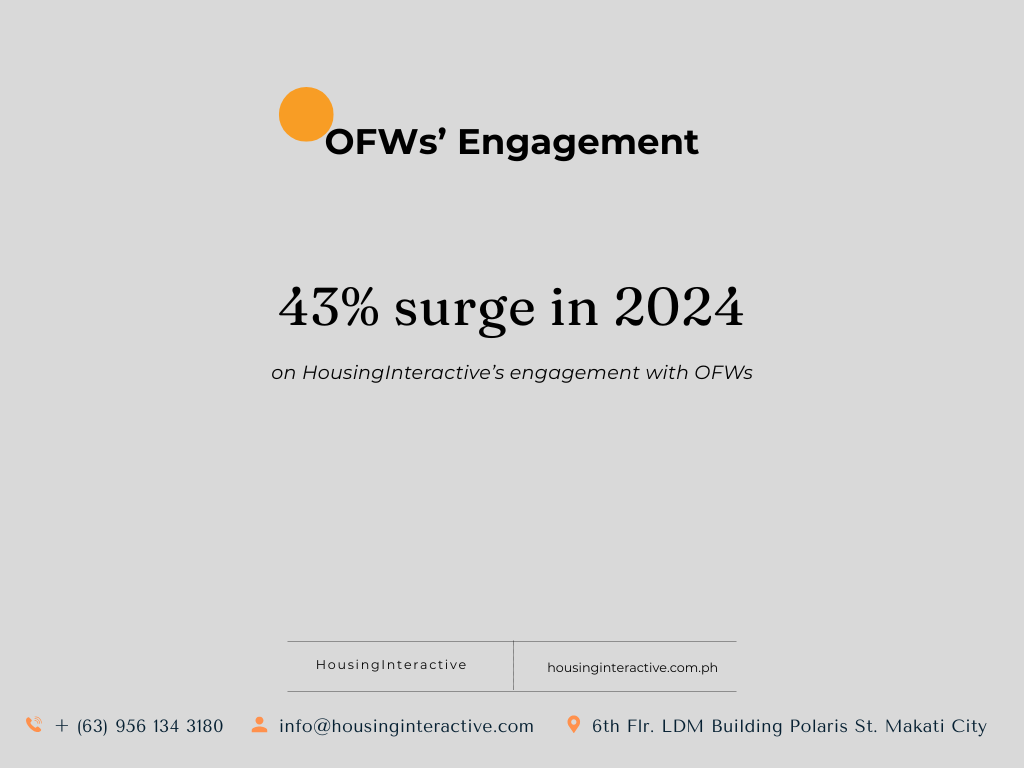
HousingInteractive’s engagement with OFWs surged by a remarkable 43% in 2024, clearly indicating this growing movement. Buyers consistently cite three primary motivations:
- Family reunification: The paramount desire to finally live with their loved ones after years of separation.
- Cost savings from leaving expensive cities abroad: The realization that their earnings can stretch much further in the Philippines, allowing for a higher quality of life and less financial strain.
- A desire to build legacy assets back home: A strong drive to invest in properties that will serve as a secure future for their families and a lasting symbol of their sacrifice and success.
This “OFW Return Effect” is a crucial driver of decentralization, funneling significant capital and a skilled workforce into provincial markets, further solidifying the shift towards lifestyle-driven living and strategic real estate investments outside Metro Manila.
The Digital Backbone of Real Estate
The real estate industry is rapidly going digital. HousingInteractive leads the way, equipping real estate agents and property managers with the technology to connect with clients, manage properties, and close deals from anywhere.
- Video conferencing tools are now standard for virtual meetings and property tours, maintaining crucial client relationships remotely.
- Project management tools are essential for remote real estate teams to organize tasks and enhance collaboration.
- The adoption of property management software allows for remote handling of tenant communications and payments.
- Cloud-based document management systems are vital for seamless access and sharing of documents in hybrid environments.
- For remote real estate agents, a dedicated workspace at home is paramount for productivity, complete with ergonomic furniture and strong internet.
- Setting clear boundaries between work and personal life is critical to prevent burnout among remote employees.
- The innovation extends to hybrid open houses, combining in-person viewings with virtual elements to reach a broader audience.
These essential tools are not just conveniences; they are the bedrock upon which the new real estate sector is being built, enabling flexible work arrangements and a more efficient workflow. HousingInteractive ensures you have the essential tools to thrive in this evolving landscape.
1. Digital Nomads and Provincial Entrepreneurs
The decentralization of real estate demand isn’t just about corporate remote workers; it’s also driven by a growing wave of digital nomads and provincial entrepreneurs. Freelancers, e-commerce operators, and various knowledge workers are fundamentally reshaping residential preferences. Armed with just laptops and portable internet, these digital professionals are actively seeking out scenic, slower-paced locations that offer a higher quality of life away from Metro Manila’s traffic congestion and high costs.
They’re choosing places like:
- La Union: Known for its vibrant surf culture and growing art scene, it offers a laid-back coastal lifestyle that appeals to creatives and entrepreneurs.
- Siargao: A world-renowned surfing destination now attracting those who want to live and work surrounded by natural beauty and a tight-knit community.
- Cebu’s Mountain Barangays: Offering cooler climates, stunning views, and a retreat from the city bustle, while still being within reach of Cebu City’s amenities.
Local governments and real estate developers are smartly incentivizing this trend. They’re collaborating to build crucial infrastructure in these emerging areas:
- Innovation hubs and co-working spaces: Providing essential professional environments for these independent workers.
- Fiber-optic networks and smart zoning: Ensuring the reliable digital connectivity that is vital for working remotely and running online businesses.
- Mixed-use districts: Creating vibrant communities with integrated cafes, fitness centers, and cultural spots, fostering a balanced lifestyle.
This strategic development is giving rise to genuine destination work zones. People aren’t just visiting these places; they’re settling down, establishing roots, and significantly contributing to the local economic activity. This creates a powerful ripple effect, boosting local businesses and further solidifying the decentralized Philippine real estate landscape.
Case Studies
A. Iloilo’s Livability Model
Iloilo City has emerged as one of the Philippines’ premier Work-from-Anywhere (WFA) destinations. It masterfully combines provincial ease with genuine urban convenience, making it a compelling choice for professionals seeking a more balanced lifestyle without sacrificing career growth.
This success is built on a solid foundation:
- Efficient Roads and High Safety Rankings: Iloilo boasts well-maintained infrastructure and a reputation for safety, ensuring a smooth daily life.
- Strong Internet Coverage: With an average fiber speed of 70 Mbps, Iloilo provides the robust digital backbone essential for seamless remote work and virtual meetings.
- Cost-Effective Living: The monthly cost of living in Iloilo is a significant 20–25% lower than Metro Manila, offering substantial financial relief for residents.
- Booming Development: In 2024 alone, Iloilo saw 12 new vertical and horizontal housing developments, reflecting strong investor confidence and a rapidly expanding market to meet demand.
HousingInteractive currently lists Iloilo properties tailored specifically for remote workers, showcasing the city’s diverse offerings. Furthermore, TalkShop has been actively involved, providing crucial leadership training for BPO managers and returning entrepreneurs in the city, ensuring the workforce is equipped with the soft skills needed for remote and hybrid teams.
It’s a testament to how strategic development and digital readiness can create a truly livable and workable city outside the traditional capital.
Iloilo proves you can thrive professionally without Metro Manila stress.
— John Riad, CEO, HousingInteractive
B. Baguio’s High-Elevation Advantage
Baguio City, traditionally renowned as a tourist haven and academic center, is rapidly establishing itself as a serious Work-from-Anywhere (WFA) contender. Its unique advantages make it an increasingly attractive option for those looking to escape the lowland heat and congestion.
Baguio offers a distinct appeal:
- A Year-Round Cool Climate: This is Baguio’s signature draw, providing a refreshing escape from the tropical heat that is conducive to both productivity and well-being.
- Prolific University Presence: With numerous prestigious universities, Baguio attracts academics, researchers, and consultants who can easily integrate into the city’s intellectual environment while working remotely.
- Upgraded Digital Infrastructure: Under the Department of Information and Communications Technology’s (DICT) “Broadband ng Masa” program, Baguio has seen significant improvements in its internet connectivity. Its fiber penetration dramatically jumped from 34% in 2022 to over 60% in 2024, ensuring reliable digital access for remote employees.
HousingInteractive data further underscores Baguio’s rising prominence in the Philippine real estate landscape:
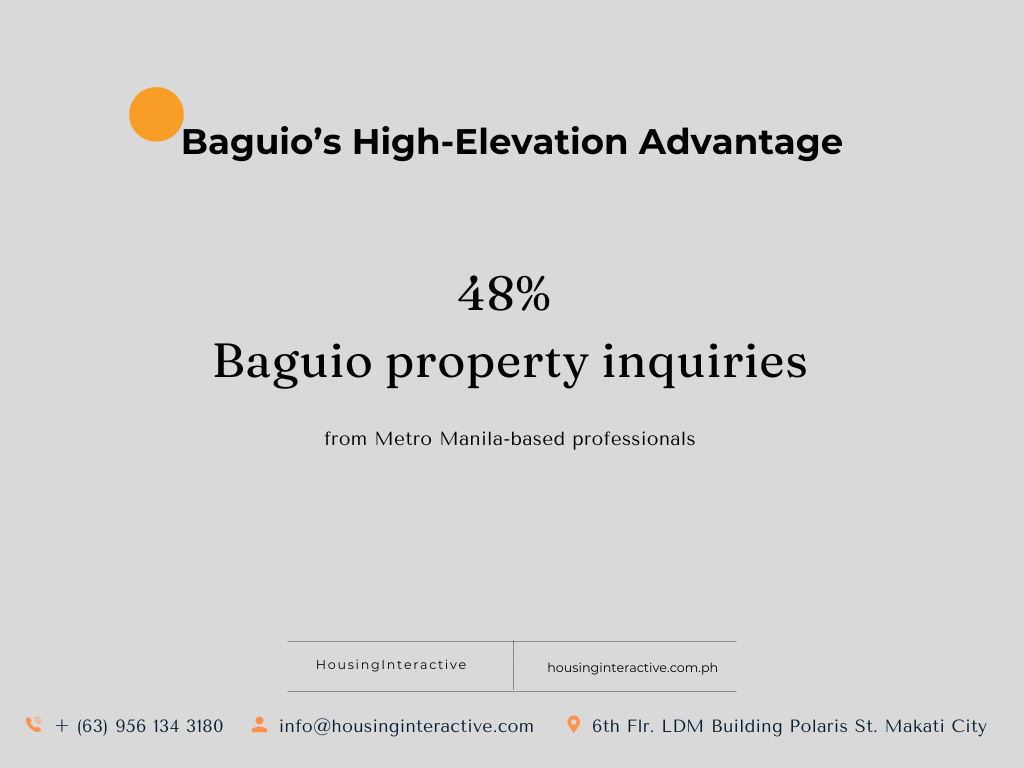
- We’ve observed a 48% rise in inquiries from Metro Manila-based professionals for Baguio properties, indicating a strong migration trend.
- Townhouse communities like Pine Estates are experiencing a notable 17% year-on-year value increase, demonstrating robust market growth and investment potential.
- There’s a growing phenomenon of “half-year” dwellers, professionals who strategically split their time between Baguio’s cool climate and their obligations in the National Capital Region (NCR), maximizing both lifestyle and professional convenience.
Baguio exemplifies how unique environmental advantages, combined with proactive digital infrastructure development, can transform a traditional tourist spot into a vibrant, high-demand WFA destination. Its real estate market is poised for continued strong growth as more Filipinos discover its high-elevation advantage for a balanced and productive life.
2. TalkShop’s Role: Soft Skills for a Flexible Workforce
The freedom to work from anywhere demands more than just a strong Wi-Fi signal; it requires a new set of adaptive skills. As the Philippine real estate landscape shifts towards decentralized living and hybrid work models, the workforce needs specific soft skills to thrive. Effective communication, seamless collaboration, and strong self-management are no longer just beneficial—they’re essential.
TalkShop directly addresses this critical need, empowering remote employees and teams to excel in non-traditional work environments.
- Virtual Communication Training for Remote Professionals: In a WFA world, virtual meetings replace physical interactions. TalkShop provides crucial training on how to communicate clearly and effectively through digital channels. This includes mastering virtual etiquette, delivering impactful online presentations, actively listening during video calls, and ensuring messages are understood across remote teams. This directly impacts employees’ mental health by reducing communication-related stress and misunderstandings.
- Leadership Coaching for Hybrid Team Managers: Managing a team that’s split between the physical office and various locations requires a unique approach. TalkShop offers specialized coaching for managers leading hybrid teams, focusing on how to maintain team cohesion, foster a sense of belonging, delegate tasks effectively, provide constructive feedback virtually, and ensure productivity without constant oversight. This helps managers create a healthy work-life balance for their teams, even when not physically together.
- Productivity Programs for Individuals Adjusting to Non-Traditional Work Setups: Many remote workers struggle with the blurring lines between work and personal life and the distractions of a home office. TalkShop offers programs designed to help individuals develop crucial self-discipline, time management techniques, and strategies for creating effective dedicated workspaces. These programs equip individuals with the tools to maintain focus, avoid burnout, and achieve a better work-life balance within their flexible work arrangements.
By focusing on these vital soft skills, TalkShop ensures that the Philippine workforce isn’t just physically capable of working remotely, but also possesses the interpersonal and self-management capabilities necessary for sustained success in this evolving professional landscape.
Remote work decentralizes geography, but it requires central focus.
We help people work smarter, lead better, and live more meaningfully, wherever they are.
— Sheila Viesca, CEO of TalkShop.
3. Broadband as a Real Estate Catalyst
Reliable digital access is no longer a luxury for homebuyers; it’s a non-negotiable must-have. A World Bank study confirms this: homes in fiber-ready areas sell 12–18% faster and command a price premium of up to 15%. This makes robust internet a top-tier amenity, directly impacting property values and buyer interest.
Buyers are now keenly focused on:
- Average internet speed: High-speed internet is essential for uninterrupted working remotely, seamless virtual meetings, and overall productivity.
- Reliability during weather disruptions: The Philippines experiences frequent weather events, so a stable connection that can withstand storms is critical for remote employees.
- Availability of Internet Service Providers (ISPs) and 5G readiness: Access to multiple providers offers choice and competitive pricing, while 5G readiness signals future-proofing for faster, more reliable mobile connectivity.
HousingInteractive understands this fundamental shift. We’ve integrated specific digital access filters into our listings, allowing buyers to quickly find properties with the connectivity they need. Complementing this, TalkShop plays a crucial role by training remote teams in essential soft skills like netiquette, virtual collaboration, and digital resilience. These are vital abilities for professionals whose homes now double as productive, dedicated workspaces.
4. Tools for the New Buyer
To empower Work-from-Anywhere (WFA)-focused buyers, HousingInteractive provides specialized tools designed for their unique needs:
- Lifestyle Match Filters: These allow users to easily find hybrid and digital-ready properties that align with their specific work-life balance preferences and remote work requirements.
- Community Vibe Index: This exclusive tool rates areas based on key lifestyle factors like tranquility, walkability, and, crucially, digital access. It helps buyers choose communities that truly fit their desired way of living, not just their office commute.
- Remote-First Developer Watchlist: We highlight townships and developments specifically designed with the modern remote worker in mind. These often feature integrated co-working spaces, robust internet infrastructure, and amenities that support a balanced lifestyle.
These powerful features simplify property discovery, ensuring that buyers can effortlessly find and invest in properties that perfectly align their lifestyle with their livelihood in one ideal location. HousingInteractive is committed to helping you make informed decisions in this evolving Philippine real estate landscape.
Infrastructure: The Catalyst for Decentralization
The Philippine government’s commitment to major infrastructure projects is playing a crucial role in this decentralization trend. Key initiatives such as the North-South Commuter Railway, the Metro Manila Subway, and the development of new major highways are significantly enhancing connectivity between Metro Manila and provincial areas. These improvements are making it easier and faster for people to commute, which directly translates to increased property values and rising real estate demand in once outlying regions. Inquiries near future rail stations have surged by 37%, reflecting growing buyer interest.
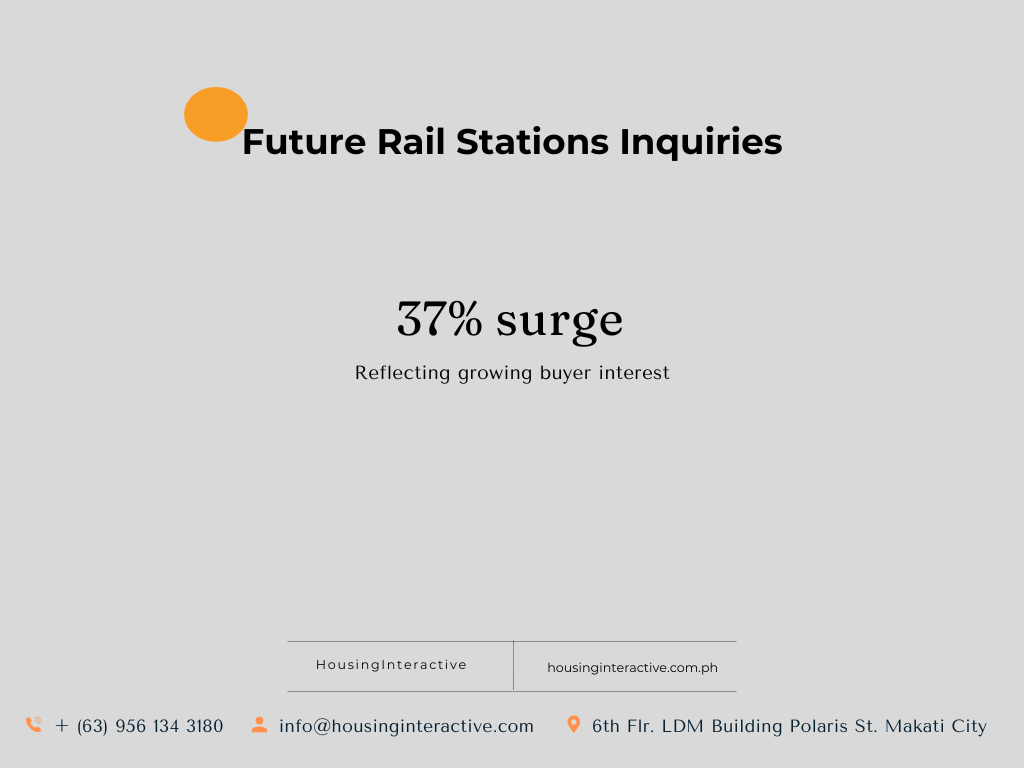
Additional examples of impactful infrastructure projects include:
- The Cavite-Laguna Expressway (CALAX) has reduced travel time between Cavite and Laguna, making these provinces more accessible for daily commuters and remote workers.
- The Tarlac-Pangasinan-La Union Expressway (TPLEX) facilitates easier access to northern provinces, thus boosting real estate interest in areas like Tarlac and Pangasinan.
- The expansion of the Subic-Clark-Tarlac Expressway (SCTEX) improves connectivity to the Clark Freeport Zone, which is emerging as a major economic and residential hub.
- The ongoing improvements to the South Luzon Expressway (SLEX), which connects Metro Manila to Batangas and Laguna, support the rise of suburban communities.
- The construction of new bridges and bypass roads in provinces such as Rizal and Bulacan is easing traffic congestion and enhancing accessibility.
These infrastructure development projects are more than just transport improvements; they are catalysts for the creation of new economic corridors and integrated communities. These communities often feature a mix of residential, commercial, and recreational spaces, including green spaces and guaranteed digital connectivity, aligning with the modern buyer preferences for holistic and sustainable living environments.
By transforming accessibility, these projects are reshaping the Philippine real estate landscape, enabling the growth of vibrant provincial centers that attract many remote workers and investors seeking properties that support the work-from-anywhere lifestyle.
Investing in the New Frontier: Beyond Metro Manila
The Work-from-Anywhere (WFA) trend has opened up unprecedented real estate investment opportunities across the Philippines. The market is poised for continuous growth, driven by decentralization and the evolving needs of the workforce. Smart investors are now confidently looking beyond Metro Manila, targeting provincial areas with high potential for long-term growth and appreciation, especially those with easy access to new infrastructure projects.
The focus has decisively shifted to properties that cater to the remote work lifestyle: homes with more space for home offices or dedicated workspaces, conveniently located near essential healthcare facilities and amenities. This new wave of buyer preferences demands that developers and real estate agents make informed decisions to meet this evolving demand, recognizing the numerous benefits for investors who adapt.
1. Future-Proofing: Flexible Housing Models Emerge
Real estate innovation is also responding to the demand for flexibility in ownership and living arrangements. We’re seeing key trends emerge:
- Co-living Clusters: These are gaining traction for freelancers and digital nomads seeking affordability, community, and built-in amenities for working remotely. They offer a blend of private and shared spaces, fostering a collaborative environment.
- Micro-Units: Designed for singles and highly mobile professionals, these compact units maximize efficiency within smaller footprints, often in strategically located urban or suburban hubs. They cater to a minimalist lifestyle-driven living.
- Lease-to-Own Schemes: These provide a pathway to homeownership for buyers who may not have significant upfront capital, making property acquisition more accessible and aligning with the financial flexibility sought by remote employees.
TalkShop plays a vital role in this evolution, partnering with developers and leasing groups. They prepare buyers for these flexible, empowered decision-making processes, ensuring they are well-equipped to navigate the complexities of these innovative ownership models. This comprehensive approach ensures that the Philippine real estate market continues to evolve, meeting the diverse needs of its changing population.
2. Mixed-use Developments Emerging Outside Metro Manila
Here are examples of exciting townships and mixed-use developments emerging outside of Metro Manila and beyond the CALABARZON region, driven by these new trends and infrastructure advancements:
- Central Luzon (Pampanga and Bulacan):
- New Clark City (Tarlac/Pampanga): This ambitious government-led project envisions a smart, green, and disaster-resilient metropolis. It’s designed to be a hub for government offices, businesses, and research, attracting investments and creating a new urban center. Its strategic location near the Clark International Airport makes it highly appealing for businesses and residents alike.
- Capital Town (San Fernando, Pampanga): This is a prime example of a master-planned township designed to attract BPO companies with modern office spaces and high-speed internet. It also integrates cultural preservation, highlighting Pampanga’s rich heritage. Residential components offer living options for those working within the township.
- Alviera (Porac, Pampanga): This extensive development by a major developer combines leisure, tourism (with hotels and theme parks), and industrial zones. This blend caters to diverse interests, from business and technology professionals to those seeking a more integrated lifestyle.
- Northwin Global City (Marilao & Bocaue, Bulacan): Positioned strategically near the upcoming New Manila International Airport, this large-scale project aims to become a global aerocity, integrating residential, commercial, and office spaces to support the growing airport-centric economy.
- Visayas (Cebu and Iloilo):
- Cebu Business Park / Cebu IT Park (Cebu City): While established, these mixed-use developments continue to expand and attract remote employees and companies. They offer a blend of modern office towers, retail, residential condominiums, and lifestyle amenities, all within a vibrant, highly urbanized setting that’s distinct from Metro Manila’s congestion but still boasts strong connectivity via the Mactan-Cebu International Airport.
- Iloilo Business Park (Iloilo City): This rapidly developing township has transformed a former airport site into a bustling hub. It features BPO office buildings, residential towers, hotels, and a major lifestyle mall. Its growth is significantly boosted by improved infrastructure and its position as a major economic center in Western Visayas.
- Mindanao (Davao):
- Azuela Cove (Davao City): This premier mixed-use, master-planned development combines high-end residential, commercial, and recreational components along Davao Gulf. It’s a testament to the city’s robust economic activity and growing demand for integrated communities that offer both urban conveniences and access to nature. Its appeal is further strengthened by key infrastructure projects such as the Davao City Bypass Road and the Davao-Samal Bridge, which significantly enhance connectivity and accessibility in the region.
These real estate investments highlight a clear trend: the Philippine property market is diversifying beyond its traditional core. Investors who recognize and act on this decentralization, focusing on areas with strong infrastructure, a growing WFA population, and integrated community planning, are best positioned for success in the coming years.
Investors focusing on these locations can capitalize on the growing demand for properties that support the work-from-anywhere lifestyle, blending accessibility, comfort, and quality of life. As infrastructure projects continue to enhance connectivity, these areas are set to become key players in the evolving Philippine real estate landscape.
Overcoming Challenges for a Balanced Future
Despite the undeniable benefits of WFA, such as improved work-life balance, reduced commuting stress, and decreased overhead costs for most businesses, challenges exist. Remote work can lead to feelings of isolation for some employees’ mental health. However, proactive companies are addressing this by offering mental health support and utilizing tools that foster team connection for those who work from home. The blurring of lines between work and personal time can also lead to burnout if a healthy work-life balance isn’t consciously maintained through flexible schedules and strong boundaries. Addressing issues of unreliable internet connectivity, especially in more rural areas, also remains a critical component of ensuring WFA’s long-term success.
Below is a checklist summarizing the benefits and challenges of the Work-from-Anywhere (WFA) paradigm, along with effective strategies to maximize its advantages and mitigate potential downsides:
| Aspect | Details | Strategies & Solutions |
|---|---|---|
| Benefits of WFA | – Improved work-life balance | – Promote flexible schedules to support personal needs |
| – Reduced commuting stress | – Encourage remote work to save commuting time | |
| – Decreased overhead costs for most businesses | – Optimize office space and utilities | |
| – Increased productivity demonstrated in sectors like BPO | – Leverage digital tools and remote collaboration platforms | |
| Challenges of WFA | – Feelings of isolation impacting employees’ mental health | – Provide mental health support programs |
| – Blurred boundaries between work and personal time leading to burnout | – Establish clear work-life boundaries | |
| – Unreliable internet connectivity, especially in rural areas | – Invest in reliable internet infrastructure or backup options | |
| Maintaining Healthy Work-Life Balance | – Flexible schedules and strong boundaries are essential | – Encourage regular breaks and set defined working hours |
| – Promote open communication within teams | – Use collaboration tools to maintain connection | |
| Supporting Employees’ Mental Health | – Address isolation through team-building and virtual social activities | – Organize regular virtual check-ins and social events |
| – Provide access to counseling and wellness resources | – Partner with mental health professionals | |
| Ensuring Long-term Success | – Continuous assessment of remote work policies | – Adapt strategies based on employee feedback and needs |
| – Invest in technology to support seamless remote operations | – Provide training on digital tools and cybersecurity |
The Work-from-Anywhere setup is transforming the Philippine real estate industry into a more resilient, adaptable, and equitable market. It reflects the country’s readiness to embrace a future where individuals can maintain productivity, enjoy an enhanced quality of life, and minimize environmental impact—all without being confined to a single location.
HousingInteractive: Your Partner in the New Real Estate Frontier
The Philippine real estate market is undergoing a profound decentralization, driven by the Work-from-Anywhere (WFA) revolution. HousingInteractive is leading this shift, leveraging technology to connect buyers and sellers in this dynamic environment. We provide virtual tours, facilitate online transactions, and offer comprehensive listings across locations. This makes HousingInteractive an indispensable partner for many remote workers seeking ideal living spaces and for investors looking to make strategic real estate investments in this new landscape. Our insights and services are crucial for navigating the “Great Philippine Real Estate Reshuffle,” ensuring both buyers and sellers make informed decisions. The future of Philippine real estate is decentralized, dynamic, and digitally driven, and HousingInteractive is at the forefront.
Ready to Embrace the Future?
The future of living and working in the Philippines is here, and HousingInteractive is your guide.
- For Remote Workers: Discover how WFA can improve your work-life balance with more spacious homes, green spaces, and easy access to amenities in emerging provincial hubs. Visit HousingInteractive to find your ideal property.
- For Investors: Seize the opportunity in the shifting Philippine real estate market. Identify high-potential areas benefiting from infrastructure development and strong demand for WFA-friendly properties. Partner with HousingInteractive for lucrative real estate investments.
- For Businesses: Adapt and thrive in the new normal. Embrace hybrid setups and flexible schedules to boost employees’ mental health and productivity while optimizing overhead costs.
Contact HousingInteractive today to gain expert insights and leverage our digital tools to navigate this exciting transformation in the Philippine property market!
Frequently Asked Questions (FAQ)
Q1: What is “Work-from-Anywhere” (WFA) in the context of Philippine real estate?
- WFA refers to the growing trend where many remote workers in the Philippines are no longer tied to a physical office location in Metro Manila. This flexibility allows them to choose living spaces based on lifestyle preferences, affordability, and better work-life balance, leading to a decentralization of real estate demand towards provincial areas and integrated communities.
Q2: How has WFA impacted demand for traditional office spaces?
- The shift to WFA and hybrid work arrangements has led to a significant decrease in demand for conventional office spaces, particularly in Metro Manila’s business districts. Most businesses are now opting for smaller co-working spaces or maintaining a fully remote work model, causing a re-evaluation and repurposing of existing commercial properties.
Q3: Which areas in the Philippines are gaining popularity due to WFA?
- Provinces in CALABARZON like Cavite, Laguna, Batangas, and Rizal, as well as major cities like Cebu and Davao, are seeing increased interest. These areas offer a lower cost of living, more space, and access to green spaces while still benefiting from improved connectivity due to major infrastructure projects.
Q4: What should remote workers look for in a property now?
- Remote workers are prioritizing properties with a dedicated workspace or the flexibility to create one, reliable and high-speed internet connectivity, easy access to amenities like healthcare facilities, and a sense of community to support a more balanced lifestyle and employees’ mental health. Features like smart homes and ergonomic furniture are also becoming increasingly desirable for those working remotely.
Q5: How is infrastructure development influencing the real estate market with WFA?
- Infrastructure projects like new railways and major highways are drastically improving connectivity between urban centers and provincial areas. This reduces commute times, making previously outlying locations more attractive and accessible for remote employees, directly influencing property values and stimulating real estate growth in these connected regions.
Q6: How can HousingInteractive help me navigate this new real estate landscape?
- HousingInteractive leverages technology to offer comprehensive listings, virtual tours, and data-driven insights across the decentralized Philippine real estate market. They connect remote workers with suitable living spaces and assist investors in making informed decisions about real estate investments in areas poised for continued growth due to WFA and infrastructure development.
The Work-from-Anywhere (WFA) movement is fundamentally reshaping the Philippine real estate landscape. This isn’t a minor change; it’s a major shift moving demand out of Metro Manila’s business districts and into provincial areas. Remote workers are driving this by prioritizing a better work-life balance, more affordable living spaces, and avoiding severe traffic congestion. While traditional office spaces are being repurposed, the rise of hybrid work models means more interest in properties with dedicated workspaces and reliable digital connectivity. Crucially, the government’s major infrastructure projects are accelerating this decentralization, boosting property values in formerly outlying regions. For real estate agents and investors, this creates significant new real estate investment opportunities in a dynamic sector where technology plays a crucial role in connecting buyers with their ideal properties.



